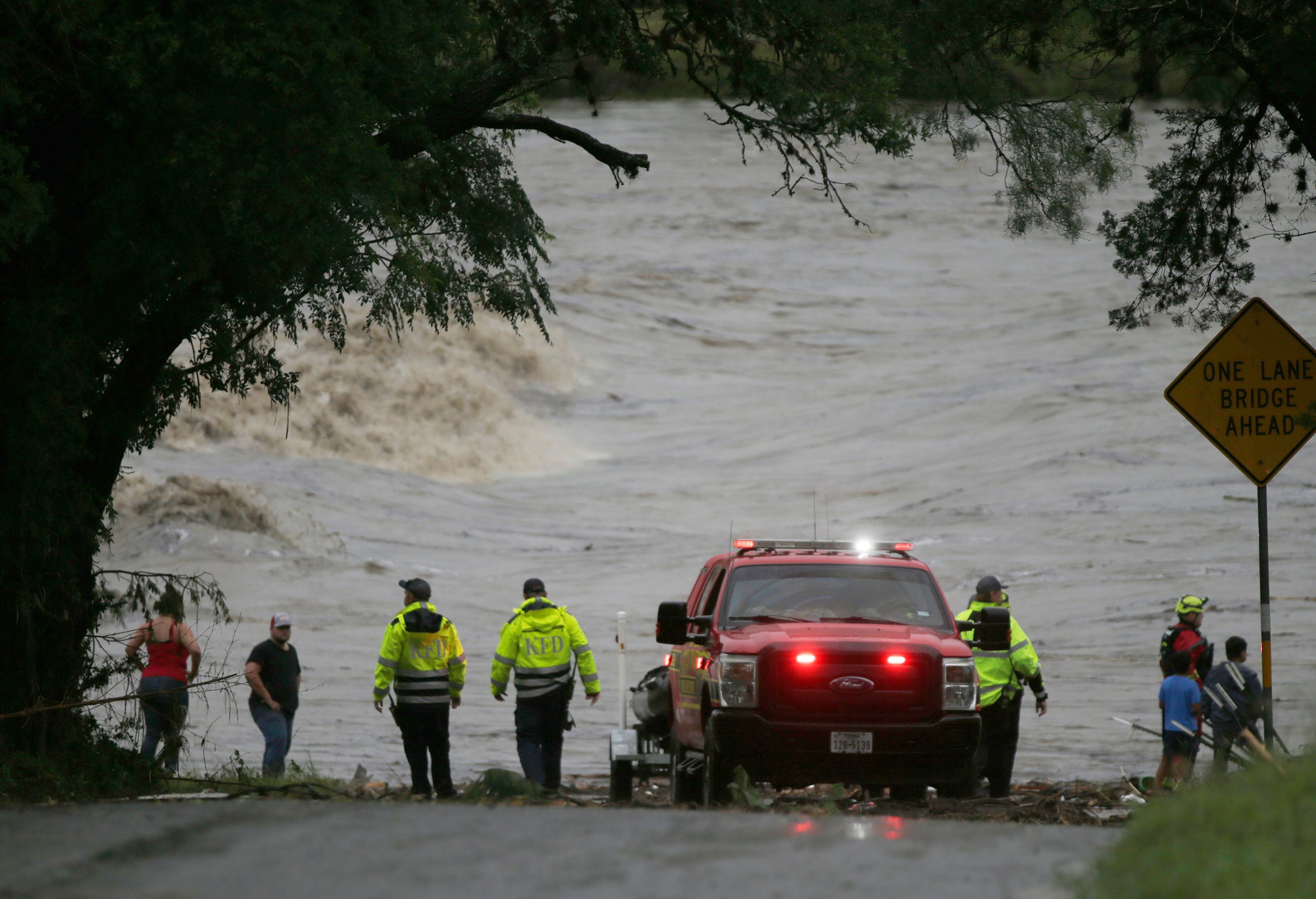Drop the Bomb!
Readers of the gushing Austin American-Statesman could be forgiven for thinking differently, but other people actually ran the 2006 New York City Marathon besides Lance Armstrong.
Lance might have been ensconced by a motorcycle brigade, personal pacers, and every amenity a runner could want. But 38,000 mere mortals had the privilege of being bussed into Staten Island four hours before the 10 a.m. start, shivering in sub-40 degree weather, waiting in hour-long lines to relieve themselves in port-o-cans and inhaling the stench that thousands of nervous runners collectively emit. Yes, thousands of them were out there—pacing, peeing, waiting, passing gas. For reasons I’m still coming to terms with, I was one of them.
The night before the race, I ate the obligatory pasta dish at a Midtown restaurant with a few old friends. It was a $30 plate of pasta consisting of little more than four squares of ravioli and a decorative dribble of red sauce, but this was carbo-loading, I explained, watching my friends sip their red wine and order $15 chocolate desserts. During the meal, I overheard the woman to my right whisper to her friend, “I can’t imagine why anyone would run a marathon. I mean, he must really have something silly to prove.” The comment banged around my head as I tried to sleep that night. An annoying question, to be sure, but not a bad one: Why was I doing this?
Early the next morning I drank two cups of bad coffee (yes, I know, a dehydrating substance) under the Verrazano-Narrows Bridge as the sun rose over the island. Waiting around for the race to start with my Austin friends Ward and Mark, I was forced to confront the inevitable port-o-can experience. The line of cans stretched down an undulating field like the Great Wall of China, but the queues of runners shifting from one foot to the other remained, despite the preponderance of johns, gargantuan. With lots of time to people-watch, I noticed how everyone was rail thin. The only really fat person stood directly in front of me in the port-o-can line. We had a nice conversation. He was Norwegian and wore a bulky GPS device on his shoe. He took a disconcerting amount of time in the “bathroom,” and when he finally came out, I pointed at his shoe and joked “Hey, don’t get lost out there, huh.” He laughed, really laughed, and, just as I was ducking into the can, came over and gave me a bear hug.
Inside the blue can I held my breath, pondered the unexpected hug, and concentrated on the task at hand. All I could do, though, was read over and over again the sticker posted above the plastic urinal: “Warning: Overuse may result in unsatisfactory results.” Perfect, I though, just perfect. And then, after considerable deliberation, I took my pee.
There’s an element of boredom that dogs everyone, I imagine, even those who generally enjoy the daily routines that shape existence. And this inexorable rut is precisely what drove me to this very moment in life, where I found myself standing inside a plastic bathroom appreciating the absurdity of an obligatory, probably legislatively required, bathroom warning, this moment where, in the anxious countdown to my quest to run 26.2 miles, I was—for whatever reason—thoroughly enjoying myself.
The root of my revived running attitude began one morning about six months ago when I decided to monkey-wrench my own rutted system and join my neighbor Ward in his morning workout with the famous Run-Tex group, “Gilbert’s gazelles.” I was promised in no uncertain terms that I would, under the tutelage of Gilbert Tuhabonye, experience personal degradation, ego deflation, and if not metaphysical, then at least physical pain. My first outing as a gazelle proved every prediction accurate. The experience was like standing comfortable and dry atop a frozen pond when, suddenly, the ice gives way. All at 5:45 in the morning.
I’d be damned, though, if I was going to drown. Eager to prove my mettle, I busted it around the track, did my wind sprints with gusto, and pushed as hard as I could to show Gilbert the guru that I was no slouch, that I, too, was pure gazelle gold. When I finished my eighth grueling 800-yarder, Gilbert ran up to me, muttering, “No, no, no, no.” His eyes were frantic and despairing, his hands were grabbing his head, and he looked at my friend Ward as if to say, “Where’d you find this clodhopper?” Gilbert looked at me as if I’d just committed a small crime, sighed, and explained in his heavy Rwandan accent, “Jeeeemeeee, you run like you keeeeking cheeeckins.” I looked to Ward for a translation, and, once he stopped laughing, he explained that I ran as if I were kicking chickens, and started laughing again. “Glad you came?” Ward asked.
Oddly enough, I was.
During the next three months I would repeatedly run up the steepest hills in Austin, do four-mile sprints, run distances that if driven would significantly deplete a car’s gas gauge, engage in something called a “fartlek,” and charge up the steps of Mt. Bonnell as if I were Rocky Balboa after drinking that big glass of raw eggs. Three days a week, hours of workouts a month, trips to the gym, stretching muscles I didn’t know I had—I did all of it with religious dedication. And I did it all without so much as a compliment, an ego soother, or a nod of approval. This was Gilbert’s quiet genius: I didn’t need affirmation. Rarely does it turn out this way, but my decisions between 5:45 and 7:15 a.m. on Tuesday, Thursday, and Saturday spoke for themselves. To comment on the matter would have been utterly superfluous, like wearing a green shirt and saying to the first person I saw, “Hi, I’m wearing a green shirt.”
Back on Staten Island, I exited the port-o-can with nothing to prove, a starting gate to find, and an ironic motto to chant: “Warning—Overuse may lead to unsatisfactory results.” Announcements came over the loudspeakers—10 minutes! Mark went to one gate, Ward and I to another. We lined up… the gun exploded… and we stood there. Ten minutes later, we still stood there, now aware that we were likely the last two people in line. By mile three, however, the delay mattered none. We were warmed up in the borough of Brooklyn, keeping our backs straight and arms moving, dutifully obeying Gilbert’s syntactically twisted but anatomically sage advice to “pick them up high the knees!” By mile eight the runner’s high had set in, and our legs were moving as if set to a metronome. We ran and talked, turning the event into yet another bull session, solving the world’s problems with every mile. At mile nine, we were undergoing a thorough condemnation of the Iraq crisis when rendered temporarily speechless by a young man running on prosthetic legs.
Small acts of heroism registered with unusual emotional power, and the scene was incredible. New Yorkers lined the streets three rows deep, cheering and playing music, reading poetry and proffering drinks. When Brooklyn was about to give way to Queens, a cranky old man stood on the sidewalk and screamed out the message scrawled on his sign. His imperative was refreshingly direct: FINISHING IS YOUR ONLY FUCKING OPTION! When we crossed the Queensboro Bridge and turned onto First Avenue in Manhattan, the roar of the crowd (it was as if we were Lance himself) only confirmed what proved to be the gentleman’s blunt statement.
By mile 21, though, the cheers were meaningless, the people were distractions, the scenery grim. All I remember about the Bronx was slowly coming down from my high and realizing that the human body is not designed to do what I was doing. The pain defied words. “Overuse may result in unsatisfactory results… Overuse may result in unsatisfactory results…” Suddenly the port-o-can sticker wasn’t so funny. Back in Manhattan, on Fifth Avenue, the exhaustion had in fact become metaphysical, but I stayed sane by recalling the inane:
I remembered that Gilbert, as a young Tutsi, had survived a Hutu raid on his Tutsi school. I remembered, from reading his autobiography, This Voice in My Heart, that Gilbert—just a boy—had hidden under piles of dead bodies to escape the butchery and burnings that killed his classmates. I remembered that he was the sole survivor.
It seemed kind of cheap to draw strength from another man’s genuine suffering. But that’s what worked in the fog of delirium, and by mile 24 that’s what I felt, delirium. Ward had hit his stride and actually looked to be having a load of fun—in all of our training runs he always bloomed late in the game—but I felt myself being crushed.
There was only one thing left to do: “Drop the bomb!” That’s what Gilbert always yelled as we neared the last stretch of a run and, at mile 25, that’s what I heard, and that’s what I did. With Ward 30 yards ahead of me in Central Park, I dropped my bomb. Granted, it might classify in most people’s judgment as a firecracker, but at 26.2 miles, next to Tavern on the Green, Ward and I crossed the finish line together. In the split second between crossing the finish line and realizing how badly my legs hurt, I felt unmitigated bliss.
Finishing a marathon is much like leaving a great, long movie and heading back to the parking lot. Reality, which had been so convincingly suspended, suddenly crashes down. Cell phones go off, discussions ensue about grocery shopping, people drive off to grapple with the next task in life. After the race, Mark—who finished well ahead of us—was nowhere to be found. Ward and I tried in vain to locate the truck carrying our warm clothes. Ward’s daughter finally found us and announced that their hotel had canceled their reservations. The wind was whipping down Central Park West, and I was cold again. I headed south on foot back to my friend’s apartment.
Halfway back I realized I needed to pee again so, as every tourist knows to do when you have to pee in New York, I found a Starbucks. I ordered a “tall” and waited in line to use the facilities. After entering the bathroom, I looked in the mirror. My face was drawn, stressed. I did my business, noted the “employees must wash hands” sign, cleaned my own hands, and walked out. Maybe it was the dried salt covering my face, but no one was kind enough to even give me a hug.
Former recovering marathoner James E. McWilliams will be running in the Austin marathon in February.


